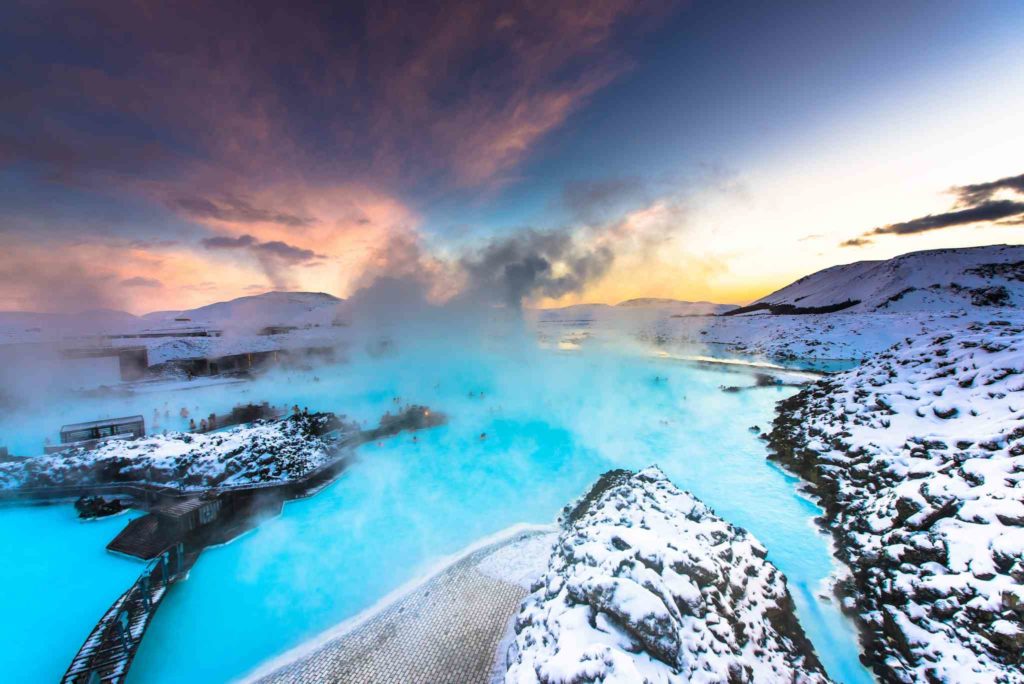
The Blue Lagoon is a world-famous Icelandic attraction that draws tourists in with its stunning, glowing blue water.
The Blue Lagoon is one of the most popular attractions in Iceland and it’s not hard to see why. The site, located about 15 minutes from Keflavík Airport and 30 minutes from downtown Reykjavík, is a beauty of nature, referred to by some as a natural wonder of the world. Surrounded by black fields of lava and dotted with green moss, the main attraction is the lagoon itself – a milky-blue body of water with temperatures hovering around 102 degrees Fahrenheit year-round. It’s a nice, relaxing way to spend part of your trip to Iceland no matter what time of the year it is! But what is the history behind this attraction and what makes it so blue?
Blue Lagoon – History
Despite its natural beauty, the Blue Lagoon is actually partially man-made. It dates back to 1976 when the pool of water was formed next to a geothermal power plant. It is not a natural hot spring – in fact, the water within is wastewater from the power plant! While at first glance this may put you off, it should be noted that the water in the Blue Lagoon is completely safe and contains only natural minerals. The water originates from deep underground and is the main method used in Iceland to heat homes, although this water is used to heat up separate freshwater, which in turn is sent out to heat residences. Since water continuously streams into the lagoon, it is self-cleaning as well, renewing every 48 hours.
So Why Is It So Blue?
The Blue Lagoon is blue because of the terrain surrounding the water feature as well as a little science regarding light reflection. The lagoon is surrounded by a field of lava, and as the water brushes up against the lava, tiny particles are eroded from the surface of the lava. These are particles of the substance silica – a mineral compound containing silicon and oxygen. Now comes a short science lesson! All matter reflects light and the colors that our eyes perceive is dependent on the light rays that are reflected to us. Every color is associated with particular wavelengths on the light spectrum, and when light rays come in contact with matter they will reflect certain wavelengths while absorbing others. White light is seen when all of the wavelengths within the visible light spectrum are reflected to us, while darkness occurs when all wavelengths are absorbed. In the case of the Blue Lagoon, we see blue because the silica that permeates the water only reflects blue and absorbs all other colors!
Explore the World with AESU!
Are you ready to plan an adventure of a lifetime? AESU offers unique, thrilling travel programs for college students and young professionals at affordable rates. Each trip is action-packed and informal—designed just for people your own age. We are also able to design custom tours just for your group.
Looking to travel next year? Experience our brand-new domestic tours with beautiful destinations such as the California Wine Country, Nashville Music City, The Wild Wild West, and Outdoor Wonderland – British Columbia!
2021 tour dates are now available! If you have any questions or want help booking your next adventure, please contact AESU by calling 800-638-7640, or fill out the contact form found on our website. Follow AESU on Facebook, Twitter, Instagram, LinkedIn, and Pinterest.
